22 Comments
Bonnie Harcey
2/13/2014 12:00:50 am
Does the metal part installed in the case attach to the machine...why is it configured the way it is?
Reply
OldSewinGear
2/13/2014 02:46:23 am
Bonnie,
Reply
OldSewinGear
2/13/2014 02:48:53 am
Forgot to mention there's a picture of the inside of the case on the Singer Accessories gallery page.
Marina Garcia
10/2/2018 10:31:47 am
Hi, where can I Find the accessories?
David
10/14/2014 04:18:37 am
I think you may be a bit mistaken about some of the model 301 history you've presented. From another web site I've learned that in Singer literature of the period the model 301 is shown in three variants. The 301-1 is the short bed version, and while intended to be mounted into a cabinet, it quickly becomes portable via the release of one lever. It also makes use of two separate cord attach points, one being the power cord, the other being the cord for the foot control. I have this model at home, and it's been in the family since purchased new in 1952. The 301-2 is the long bed version, and it's intended to be a strictly portable machine, so it came with a suitcase type affair to carry it and its accessories around in. It also makes use of a single cord attach point that performed double duty as power cord and foot control cord. And finally, the 301-3 was a version intended for school use only. The bottom line is the short bed version with the cabinet mounting device was not an afterthought in any sense of the word. The very first special edition machines off the line in 1951 were configured this way, and the very rare green cover instruction manual that came with them explains how to release them from their cabinets via the release lever. The other site shows a few photos of serial number 18, and it's a short bed version in black. It’s also worth mentioning that when the official release date of the model 301 came up in October of 1952, the ease with which the machine could go from cabinet to portable was prominently featured in all of the advertising. In short, Singer knew exactly what they were doing with these machines and was justifiably proud of their product.
Reply
OldSewinGear
10/14/2014 02:34:02 pm
David,
Reply
David
10/14/2014 03:39:21 pm
You're very welcome, Barbara. Based on the appreciation you have for these venerable old machines (which comes through clearly in your writing) I figured you'd get a kick out of that site. Having just recently rediscovered my families 301, I've been having a great time learning more about them, which has lead me to your site and others that are now added to my favorites list.
OldSewinGear
11/18/2014 01:55:57 pm
Thanks for sharing, Patrice. The 301 is definitely one of Singer's crowning achievements. The only black long-bed I've ever encountered was a beauty except someone had spilled acid on the sewing platform and corroded a hole right through the paint and into the metal. It was in an antique store and the seller was asking a ridiculous price for it. I tried to figure out a way it could be salvaged but couldn't see any hope for it. Very sad.
Reply
OldSewinGear
11/19/2014 07:37:21 am
Very nice, Patrice! Thank you for sharing. It's a lovely machine with a nice set of original accessories. Barbara
Reply
David
2/9/2015 02:43:47 pm
Hello. I grew up with my Mom making some of my clothes on a Singer 301 short-bed. She has the case as well as the folding table. I recently acquired another folding table with the cut-out for a long-bed. A person could cut out a small piece of plywood to fill in the difference and use a short-bed in this table. I'm actually looking to sell the table as I have no machine to use in it. I have several Singer 201's as well as others and a featherweight, so I have "enough" machines for now.
Reply
kim
3/3/2016 01:11:53 am
i have one for sale $200 9162130635
Reply
george wages
12/22/2016 05:21:48 am
love your information. I'm 70 now and sewed my first stich this year. I just became interested in sewing machines when I asked my wife if she could sew some heavy nylon webbing. she said her machines were possible to light duty. So I went to learning about sewing machines. I have learned the history of Necchi , Janome , White , and now working on Singer. And there are many more to study. I have also learned to work on them and fix or find out whats wrong with them. I have become addicted to good machines and buy all I find at thrift store yard sales and local post on Facebook etc. I have even got some great deals on Ebay despite shipping cost. I missed my calling in life. but its never to late. My poor Wife is befuddled ! Just yesterday she asked...When are you going to have enough sewing machine's ? I had to laugh. Maybe never, I havent started on the commerical duty machines yet ! lol. I want to thank you for the information you posted. Truly enjoyed it plus learn things I really needed to know
Reply
Lisa
12/28/2017 04:07:16 pm
ARRRGGHHH! I just obtained my second 301. I already had the black short-bed installed in the Art Deco style cabinet. Love the machine AND the cabinet! Then I came across a beige short-bed in the trapezoid case. It is just too cool. I could (theoretically) take it anywhere. But really, I have too many sewing machines and should sell one of these. But which???
Reply
Mollie Todhunter
3/11/2018 12:08:58 am
Loved the article & information here! About 10 years ago, I acquired the 301a shortbed in a cabinet with the cradle that makes it portable. I was so surprised to see that it was portable with the flip of a lever! It hadn't sold at a neighbor's yard sale & she offered it to me for $10. I didn't need it or really have room for the desk it came in but couldn't walk away without it. When I got it home, I found it had 2 original instruction manuals, (one for the machine, the other for attachments), & all the attachments! It also had 19 bobbins that didn't seem to fit. I took it to the repair shop & discovered they were Pfaff bobbins that fit a machine I already had.😅They had the correct bobbins in stock & for a few dollars, I was all set. That machine sews like a champ & what a bargain.
Reply
Colleen Sims
4/27/2018 05:23:39 pm
I have 3 301s, two with cases. One case really needs to be refurbished. I have looked on line and found no instructions thus far on how best to approach refurbishing with the intent of improving the strength of the case as well as it's appearance. Do you have any reference sources for a project like this?
Reply
Teresa RAwlins
10/3/2019 11:51:20 am
I just acquired a 301a with the cabinet, awesome machine. Does the cradle need to be taken out of the cabinet for the machine to be “tucked” away when not in use?
Reply
Tre'
12/22/2019 03:28:51 pm
The cradle allows the 301 to be mounted in a cabinet. Once the cradle is mounted into the cabinet the machine slips into the cradle and can be lowered when not in use just like any cabinet mounted machine. With the machine up, the machine can be released from the cradle and be used as a portable. With the machine freed from the cradle the cradle does not need t be lowered for the lid to be closed.
Reply
George Wages
12/23/2019 03:38:49 pm
Never get tired of reading and re-reading the article's
Reply
Lori
2/22/2020 08:15:11 am
Love my collection of vintage sewing machine. I snagged the 301 card table and have been using it as bait ever since. However, a 301 for me continues to allude me. They are out there and it's not due to a lack of trying. Ao my hunt continues.
Reply
Pam Kish
9/26/2021 08:36:27 pm
A repair shop in Wakarusa, Indiana has a 301 for sale if you’re still interested in getting one.
Reply
Leave a Reply. |
News, Reviews,
|
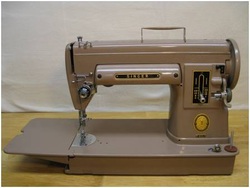
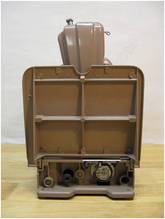
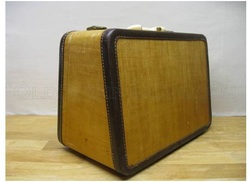
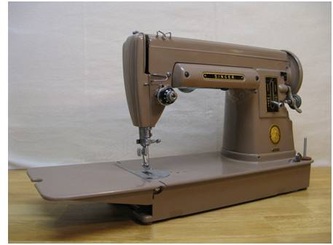
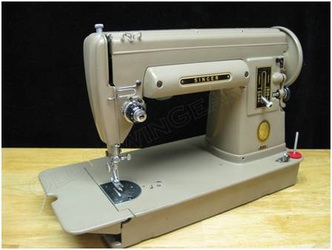
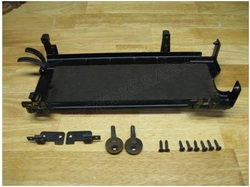
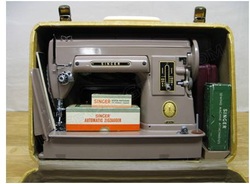
 RSS Feed
RSS Feed